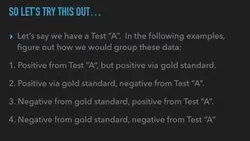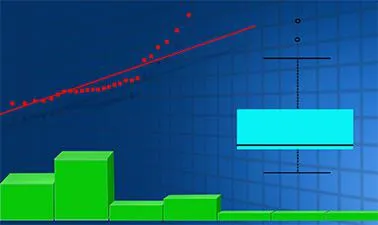
Classic Biostatistics Videos 
This course provides an overview of classic biostatistics topics, including sensitivity and specificity, positive and negative predictive values, Bayes theorem, cohort, case control, cross sectional studies, clinical trials, and relative risk versus odds ratio. It is designed to help students understand these concepts without memorization. ▼
ADVERTISEMENT
Course Feature
![]() Cost:
Cost:
Free
![]() Provider:
Provider:
Youtube
![]() Certificate:
Certificate:
Paid Certification
![]() Language:
Language:
English
![]() Start Date:
Start Date:
On-Demand
Course Overview
❗The content presented here is sourced directly from Youtube platform. For comprehensive course details, including enrollment information, simply click on the 'Go to class' link on our website.
Updated in [February 21st, 2023]
Sensitivity and Specificity WITHOUT MEMORIZATION: Biostatistics-1.
PPV, NPV and BAYES THEOREM: USMLE* Biostatistics-2.
Cohort, Case Control, Cross Sectional Studies, Clinical Trials: USMLE* Biostatistics-3.
Relative Risk versus Odds Ratio: USMLE*Biostatistics-4.
Likelihood Ratios vs Predictive Values: USMLE* Biostatistics-5.
Attributable Risk vs. Absolute Risk Reduction: USMLE* Biostatistics-6.
NNT vs NNH: USMLE *Biostatistics-7.
(Please note that we obtained the following content based on information that users may want to know, such as skills, applicable scenarios, future development, etc., combined with AI tools, and have been manually reviewed)
1. You can learn the basics of biostatistics without memorizing complex formulas. This course will provide you with an understanding of sensitivity and specificity, PPV, NPV, and Bayes Theorem.
2. You can gain an understanding of different types of studies, such as cohort, case control, cross-sectional, and clinical trials. This course will provide you with the knowledge to understand the differences between these studies and how to apply them.
3. You can learn the difference between relative risk and odds ratio. This course will provide you with the tools to understand the differences between these two concepts and how to apply them in practice.
4. You can learn the difference between likelihood ratios and predictive values. This course will provide you with the knowledge to understand the differences between these two concepts and how to apply them in practice.
5. You can learn the difference between attributable risk and absolute risk reduction. This course will provide you with the tools to understand the differences between these two concepts and how to apply them in practice.
[Applications]
Students who have completed the Classic Biostatistics Videos course can apply their knowledge to a variety of medical and research settings. They can use their understanding of sensitivity and specificity, PPV, NPV, and Bayes Theorem to interpret medical test results. They can use their knowledge of cohort, case control, cross-sectional studies, and clinical trials to design and analyze research studies. They can use their understanding of relative risk versus odds ratio, likelihood ratios versus predictive values, attributable risk versus absolute risk reduction, and NNT versus NNH to interpret research results.
[Career Paths]
1. Biostatistician: Biostatisticians use statistical methods to analyze data and solve problems in the field of health and medicine. They are responsible for designing and conducting studies, analyzing data, and interpreting results. The demand for biostatisticians is increasing due to the growing need for data-driven decision making in the healthcare industry.
2. Clinical Research Associate: Clinical Research Associates are responsible for the planning, coordination, and execution of clinical trials. They are responsible for ensuring that the trials are conducted in accordance with the protocol and applicable regulations. The demand for Clinical Research Associates is increasing due to the growing need for clinical trials in the healthcare industry.
3. Data Scientist: Data Scientists use data to solve complex problems in the healthcare industry. They are responsible for collecting, analyzing, and interpreting data to identify trends and patterns. The demand for Data Scientists is increasing due to the growing need for data-driven decision making in the healthcare industry.
4. Epidemiologist: Epidemiologists use data to study the causes and effects of diseases and other health-related issues. They are responsible for designing and conducting studies, analyzing data, and interpreting results. The demand for epidemiologists is increasing due to the growing need for data-driven decision making in the healthcare industry.
Course Provider

Provider Youtube's Stats at AZClass
Discussion and Reviews
0.0 (Based on 0 reviews)
Explore Similar Online Courses

Creative Drawing With Simple Shapes

Flat & Dimensional drawing techniques in Adobe Illustrator - A Graphic Design for Lunch™ Class

Python for Informatics: Exploring Information

Social Network Analysis

Introduction to Systematic Review and Meta-Analysis

The Analytics Edge

DCO042 - Python For Informatics

Causal Diagrams: Draw Your Assumptions Before Your Conclusions

Whole genome sequencing of bacterial genomes - tools and applications

Doing Clinical Research: Biostatistics with the Wolfram Language

Introduction to Applied Biostatistics: Statistics for Medical Research


Start your review of Classic Biostatistics Videos